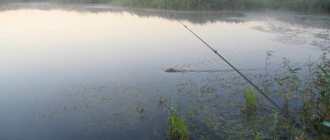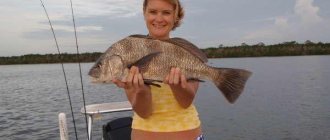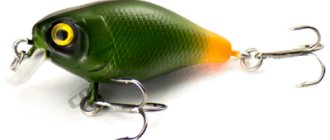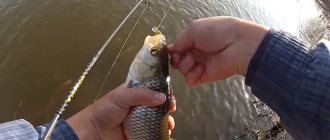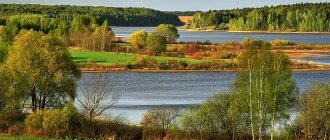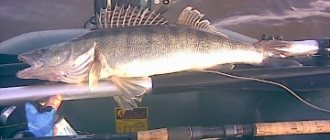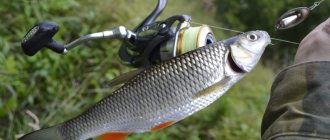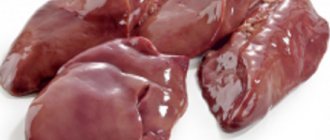Taxonomy
- Latin name: Squalius cephalus.
- Order → Family → Genus: Cyprinidae → Cyprinidae → Dace.
- Closely related species: dace, ide.
Content:
- Description
- External signs
- Coloring and its variations
- Dimensions, weight, maximum age
- Similar fish species
- Anatomical features
- Area
- Habitats
- Lifestyle
- Habits
- Parking places
- Fat spots
- Daily activity
- Seasonal activity
- Migrations
- Natural enemies
- Nutrition
- Spawning
- Fishing
- Summer fishing
- Lure
- Winter fishing
- Biting and fishing
- Our observations
- Summer
- Winter
- Taste and nutritional value
- Meat composition
- Interesting Facts
- Chub in an aquarium
What do chubs eat?
A separate section is gastronomic preferences. Some call it a predator, others tend to talk about the omnivorous nature of the fish. Judge for yourself. It can feed on algae, grains, years or fruits. Does not disdain insect larvae, happily eating leeches and worms. Baby frogs are also part of his daily diet. Older individuals hunt for fry. So, who is the chub, a herbivore or a predator? Most likely, it can be called an omnivore, which would be correct. In winter it prefers benthic organisms. It becomes active only at the beginning of cold weather, and in the last winter month. Small and medium-sized specimens live in small flocks. Adult fish prefer a solitary lifestyle. Its daily diet includes fry, dragonflies, beetles, tadpoles and frogs.
Description
The chub is a large river fish, rarely found in some European lakes. By nature of nutrition it is omnivorous, although most often it behaves like a predator. It is held in high esteem by spinning fishermen as a worthy, “sports” trophy.
External signs
It has a moderately elongated, almost cylindrical body. The head is noticeably larger than that of most other freshwater fish - with a characteristic wide and flat forehead: the chub got its name for this feature. The mouth is terminal with a wide slit. The lips are thick, fleshy, and quite strong. The scales are large and fit tightly into the skin. The lateral line from the tail is almost straight, but closer to the head it has some deflection towards the belly, the number of scales in it is from 43 to 47. The caudal fin is notched, the dorsal and anal fins have a convex edge, slightly rounded. Gill rakers are sparse, short, their number is from 8 to 11.
Coloring and its variations
The back is dark, almost black, and may have a slight tint towards green, blue or purple. The sides are light, slightly yellowish, and have a silvery sheen, which is most pronounced in young individuals.
The dorsal and caudal fins are usually colored to match the color of the back, while the outer edge of the dorsal fin is the darkest; in the water it immediately catches the eye and looks like a wide black border. The pectoral fins are noticeably lighter underneath and may have an orange tint. The ventral and anal fins are bright, red-orange in color, sometimes with a colorless or dark edge.
The coloring of individual scales on the sides and back of the fish is very unique. Each of them is edged with a dark border, which in the front part of the scale expands into a noticeable spot.
The eyes are large, shiny with a yellowish tint, and have a more saturated yellow-brown spot in the upper part. The chub usually does not form forms that differ in color, but in some reservoirs its color may vary. Thus, in some European rivers there are populations of fish with black fins.
Dimensions, weight, maximum age
In our rivers, the average weight of chubs does not exceed 1-1.5 kg with a length of 35-45 cm, although this fish can reach a length of 80 centimeters and weigh 6-8 kilograms - cases of catching such giants are described in the literature. The maximum registered age is 18 years.
Similar fish species
Chub is sometimes confused with ide. It differs from the latter in having larger scales and a convex anal fin (in the ide it has a notch). Also, the pectoral fins of the ide are usually brighter in color. Small chubs have some external resemblance to dace, but differ from them in being thicker and noticeably brighter in color.
Anatomical features
The pharyngeal teeth are double-rowed, powerful, with a hook at the top, and have a formula of 2.5-5.2. The number of vertebrae is from 42 to 46.
Related fish
There is a double classification of the species. A more radical taxonomy assigns the taxon to the genus of the same name called Squalius dobula Heck, which includes more than 40 species forms. If we consider the chub as a fish of one of the subtypes of the dace genus (Leuciscus cephalus), one can easily trace the biological relationship with other representatives of the freshwater ichthyofauna.
When classifying the chub as a member of the taxon Leuciscus, it is possible to trace a lineage with several known fish - ides and dace. The greatest difficulties for inexperienced fishermen are associated with identifying an adult chub and an ide, which are similar to each other and often have the same color due to the common habitat conditions. To accurately distinguish these two types, it is enough to know a few exterior nuances (see table):
| Sign | Chub | Ide |
| Shape of the edge of the anal and dorsal fin | convex outward | concave inward |
| Number of scales in the lateral line | 44-46 | 55-60 |
| Mouth | wide | narrow |
| Head size | big | moderate |
| Sides | rounded | compressed |
| Pelvic and anal fins | red | orange |
It is also problematic to distinguish a young chub from a dace. Here you cannot focus on the size and color of the scales due to the close values of these characteristics (44-46 versus 46-52). It is more convenient to compare the shape of the anal fin: in the dace, like the ide, it has a concave edge, in the jumper it is a semicircle.
To learn more:
Burbot: what kind of fish is this?
Types of chub
The typology of the genus Squalius has a complex structure due to the many endemic forms, including small ones, which are suitable for keeping in a freshwater aquarium with a volume of 150-200 liters (dH 10-18, t +12-20°C, pH 6-8). The most interesting varieties of chub include:
- Caucasian (Kalinka Afipskaya) - grows up to 15-18 cm.
- Agdamskaya is a small species with a body length of 13-15 cm, living in the Nagorno-Karabakh Republic.
- Anatolian - lives in freshwater lakes of the Asian part of Turkey (the historical name of the territory is Anatolia).
- Croatian - inhabits the rivers of Southern Europe and the western Balkan Peninsula (Bosnia and Herzegovina, Croatia).
In addition to the common chub, Caucasian chub is also caught in Russia, which inhabits the rivers of the Azov and Caspian basins (Terek, Kuban, Afips, Psekups, Kuma, Zolka, Podkumok).
Area
Rice. 1. Habitat of the chub.
The chub is widespread in Europe. Its habitat covers a large territory - from the Pyrenees to the Urals. From the south it is limited by the Mediterranean coast, from the north by the Scandinavian Peninsula. The range covers the Apennine and Balkan peninsulas, Asia Minor, the Caucasus and Transcaucasia, as well as the basins of the Black and Caspian seas. The chub is also found in some rivers of the Baltic and White Seas.
In the Kama basin it is numerous, especially closer to the upper reaches of the rivers. In the Middle Urals it is found in rivers such as Chusovaya, Ufa, Sylva and Kosva, as well as in their deep tributaries. It was not previously present in the Ob-Irtysh basin, but over the past half century it has penetrated there through artificial channels. Cases of catching this fish in Iset and Tagil become known from time to time.
Features and habitat
The chub is a predator fish that belongs to the carp family, the genus dace. We need to look at the description of the chub fish in more detail. Her appearance is very attractive.
The back is dark emerald green. The sides are silver with a slight golden tint. A distinctive feature is the dark edging of each scale. The fins are of different colors: the pectoral fins are orange, the ventral fins are slightly reddish. But his most beautiful tail is dark blue with a black border.
On the large head there are shiny eyes with a green spot at the top and a rather large mouth with two rows of teeth. Its body is muscular and elongated, similar to a cylinder, rarely exceeding 80 cm in length. The chub weighs about 4 kg, but heavier specimens are also found.
To appreciate the beauty of the chub, you need to see its photo. Chub river fish . It is a fairly common species, but has no commercial significance. Due to widespread pollution of rivers, the number of fish has recently decreased.
Its habitat is very wide: rivers in central and southern Russia, Western Europe, Ukraine, Belarus. This fish can be found in freshwater bodies of water with fast or medium currents. It loves areas with sandy or pebble bottoms. The chub is not found in pools and muddy places.
Habitats
Photo 2. One of the chub’s habitats (Chusovaya River, upper reaches).
Inhabits medium and small rivers with fast and clean water, tries to avoid slow-flowing large rivers. It is usually found below dams, although in Chusovaya it is also recorded in the upper reaches - above the Verkhnemakarovskoye Reservoir.
In some flowing reservoirs it can form “lake” populations, concentrating at the mouth of the tributary. However, regulation of river flows, as well as the construction of dams, negatively affected the number of chub and led to its slight decrease.
Lifestyle
A very active and mobile predatory fish. Young individuals usually gather in schools; the older they are, the fewer fish there are in the school. Larger chubs live in small groups of 2-3, while the largest ones lead an exclusively solitary lifestyle.
Habits
They can stay both at the bottom (usually in the cold season) and at the surface - especially during the period of mass emergence of insects. At the same time, chubs often reveal their presence with powerful splashes. They can jump after insects flying over water, but this is not observed often and is typical mainly for young individuals.
Small chubs are usually not shy, but as this fish grows older, its behavior becomes more and more cautious. The largest individuals display this trait to the fullest - it is not so easy to catch them, and they try to occupy the most inaccessible places on the river. At the slightest sign of danger, they stop pecking and immediately leave.
Parking places
Prefers sections of rivers with moderate and fast currents - with a pebble, rocky or sandy bottom, while avoiding muddy places. It also likes to stand near steep banks, in pools with reverse currents, behind various underwater obstacles - stones, snags, bridge piles, etc. Chub can be found before and after riffles - in relatively quiet, deeper areas. With the onset of cold weather, it usually leaves shallow places and goes into holes.
Fat spots
At the time of feeding, it goes out onto the rifts, rapids and shallows. Loves places near the coast, where branches of coastal bushes and trees hang over the water. Large chubs prefer to stand in such places, as well as on the border of fast and quiet currents. In spring, in muddy water, chub most often feed near the shores. In winter, when there is a thaw, it can leave deep places and go out into shallow water - approximately the same areas where it usually fattens in the summer, but at the same time it tries to stay behind the rapids.
Daily activity
Timed to the morning and evening hours. Often fish feed even in the dark. During the day, she usually “rests,” but this rule applies to older individuals; young chubs can be active during the daytime, but at night, on the contrary, reduce their activity.
Seasonal activity
It is most evident in the warm season. With the onset of cold weather, the activity of the chub decreases; in winter (especially during prolonged frosts) it can fall into torpor. However, during thaws the chub often begins to feed intensively.
Migrations
It can rise up the river as the water level rises, as well as during spawning, entering small tributaries and upper reaches. The rest of the time it leads a relatively sedentary lifestyle, arranging small feeding movements up and downstream.
Natural enemies
Large chubs have virtually none, with the possible exception of otters and taimen - and then only if they manage to track down and catch cautious fish. Small chubs and juveniles are often eaten by predatory fish (pike, asp), heron and mink.
Features of the view
The main difference between the chub and its relatives is its large, flattened head. The fish owes its name to this feature. The large mouth and massive jaws make it possible to swallow whole not only insects, but also fry. Color depends on habitat, season, age.
Chub body
Fishermen know what a chub looks like. The body is characterized by an elongated shape. The body gradually tapers towards the tail, which ensures excellent swimming abilities. The chub floats on the water even in strong currents. The back and sides are protected from silvery, often set scales.
Age and size
Chub can live up to 5-6 years. Some individuals live up to 20 years, growth continues throughout their lives. In the first seven years, growth is most intense. The length of an individual can reach 80 cm and weigh 8 kg.
The average weight of a chub reaches 1.5 kg, the body length is 30-40 cm. Recently, a large chub weighing 2-3 kg is quite rare; the largest chub has not yet been caught.
Color
The dense back has a dark greenish, almost black tint. The light belly is covered with small scales that reliably protect the skin. The pectoral fins are characterized by a bright orange color, while the red ventral and anal fins are eye-catching. This description of the chub allows you to find it.
Vision, sense organs
The eyes are characterized by large sizes and are located on the sides of the head. Typically, chub fish have a good sense of smell, allowing it to quickly find prey.
Nutrition
- Personality: omnivore, but prefers animal food.
- Objects: small fish (mainly gudgeons), amphibians, mice (swimming rivers during migrations), insects, invertebrates, mulberry greens, berries (cherries, bird cherry, etc.) falling into the river from coastal trees.
- Seasonal preferences: no particular ones, eats everything edible. In spring - fish, invertebrates, worms (washed from the banks). In summer, it picks up insects that have fallen into the water (chafer bugs, dragonflies, grasshoppers, etc.). Closer to autumn, it begins to actively feed on small frogs, as it hides for the winter - it can switch exclusively to fish food (minnow, bleak).
- Food competitors: asp, pike.
Photo 3. Small frog is the chub’s favorite food at the end of summer.
Lifestyle and nutritional habits
The river chub has a pronounced seasonality of the biological cycle, which changes sharply depending on the time of year. The schooling fish spends the entire winter in pits and hardly feeds; some feeding activity is observed in early December and the last ten days of February. In early spring, maple stays at depths in the bottom layers, where it restores strength after a passive winter. As the water warms up, the fish rises closer to the surface. Spends the hot summer months in the upper layers, on rifts and shallows. Autumn cold snaps again “press” the jumper to the bottom and force them to gradually slide down to greater depths.
The chub is a universal hunter. Thanks to its high speed, it is able to quickly catch up with a fry, frog or small rodent crossing a pond. Small birds are sometimes found in the stomachs of caught turbaks.
Another feature of the jumper is its innate patience, which allows it to wait for prey in ambush for hours. During the season of insect flight and berry ripening, a chub can spend the whole day under branches hanging over the surface of the surface, waiting for a fallen insect or ripe fruit.
The demands on water quality do not extend to scrupulousness in choosing food. Despite its predatory nature, the maple eats with pleasure:
- worms, larvae, caterpillars, crustaceans;
- filamentous algae;
- bloodworms, maggots, mormysh;
- cereal grains and legumes (barley, corn, oats, peas);
- caviar of other fish and amphibians;
- dough, bread crumb and crust;
- all kinds of insects (beetles, flies, mosquitoes, dragonflies, butterflies, gadflies);
- ripe berries (cherries, cherries, raspberries, blackberries, etc.).
To learn more:
Silver carp: description, habits, fishing and benefits of fish
The wide mouth and powerful pharyngeal teeth allow the fish to confidently cope even with the hard shells of crayfish and mollusks. The diet of young animals is dominated by moderate dietary benthos and plant food, which affects their slow growth. Adults also dilute the menu with higher plants and algae, but are more focused on animal food, including small fish (minnow, bleak, gudgeon, goby). The main feeding period is during daylight hours. The largest chub is extremely cautious, stays solitary and feeds more often in the late evening, at night and early in the morning.
Fishing
Rice. 2. Chub biting calendar.
For chub, the rule “the larger the fish, the more difficult it is to catch” clearly works. Small specimens are present in fishermen’s catches quite often, but when catching large chubs, it is necessary to maintain silence and pay increased attention to camouflage.
Despite its abundance in some rivers, it has no commercial significance.
Articles about fishing: “Chub fishing in the spring”, “Chub fishing with a float rod”.
Summer fishing
During the flood period, the best tackle for catching chub is considered to be a donka with a worm, bark beetle or live bait (minnow) attached. In places with a quiet current, you can also catch it with a float rod (the baits are the same). Some fishermen, while the water has not yet risen too much and become cloudy, manage to successfully fish with a spinning rod.
After the water clears, spinning fishing becomes the most popular - with small spinners and pot-bellied wobblers. Chub are also caught at this time using float tackle. In this case, insects are used as bait - dragonflies and chafers, as well as their larvae, fillies, grasshoppers (the chub responds especially well to the largest of them - gray, green and songbirds, which are popularly known as "locusts"). Also used are dung worms, crawlers and a variety of vegetable attachments - bread crust, peas, corn, etc.
Fishing with surface gear is successful - fly fishing, bombard and boat (artificial flies, insects). In the summer they catch it less often with a donka (the baits are the same as when fishing with a float tackle), although it shows itself quite well.
Lure
When fishing for chub, various baits for peaceful fish work well. In the warm season - with a predominance of plant components (crackers, semolina, corn), in the cold season - with a predominance of animals (bloodworms, chopped worms). In some villages, it is practiced to feed chub with bird feed (including in winter) - according to reviews, such bait works very successfully for this fish.
Winter fishing
In winter, chub are caught using ordinary bloodworm gear. Bloodworms, jigs, bark beetles or lard are used as bait. Fishing with no bait is no less successful.
It has been noticed that in winter the chub most prefers animal baits, however, there is also information about the successful use of plant baits. There are also cases of its being caught on small spoons and balancers. On some rivers (for example, on the Ufa), chub fishing is practiced using gudgeons as live bait.
Biting and fishing
The chub takes the bait confidently, while the large one almost tears the rod out of his hands. Once on the hook, he strongly resists, somersaults and jumps. Often, this causes the tees and winding rings of spinning lures to unbend. After a successful hook, experienced fishermen try first to remove the fish from the fishing zone, otherwise its noisy splashes will scare the entire flock and the bite will temporarily stop. After this is done, the actual fishing begins.
The fish resists strongly at the very beginning, but then gets tired, after which it allows itself to be calmly brought to the shore. However, care must be taken when removing chub from the water. At the very last moment he can make a strong jerk. Particularly large fish should be caught using a landing net.
Photo 4. A large grasshopper, popularly called a “locust,” is the best bait for chub in the summer.
Lures and methods of catching chub
The main gear used is float and fly fishing rods, donka, and spinning rods. At the beginning of the warm season (end of April-June), fly fishing for chub with an artificial fly, chafer with torn off hard elytra, dragonfly, and grasshopper is very effective. Despite the strength and size of the fish, the float tackle should be as thin as possible; usually a monofilament line up to 0.2-0.25 mm thick and a thinner leash (0.15-0.2 mm) are used.
To learn more:
Description and characteristics of European grayling
Since chub fishing takes place in the current, it is important to choose a stable and sensitive float with a long keel. A stick stick, drop or flat lollipop is ideal. The bait is bread crust or crumb, worm, insects, crayfish or shellfish meat, corn.
Spinning chub fishing with silicone baits, small wobblers, poppers, spinners and spoons gives excellent results. Donka fishing provides ample opportunities in cold water - this is a high-quality fishing of holes, dumps, and edges. Often live bait (bleak, gudgeon, verkhovka) is hooked.
Our observations
During our fishing practice, we have repeatedly caught chub in the rivers of the Middle Urals belonging to the Kama basin. There it was the most common fish in catches, especially on Chusovaya, where it is very numerous in the middle reaches.
Summer
For open water fishing, we used different gear: a float rod, a donka, a spinning rod, a bombard, but the boat proved to be the best of all. Grasshoppers (July) and small frogs (August, September) were used as bait; the fish also responded well to small wobblers attached to leashes. The catches included individuals from 300 grams to two kilograms. Often it was possible to catch a bucket of fish in one place. The best catches occurred in places where, immediately after the roll, there was a long, quiet stretch with good depths.
The second most catchy summer tackle is the donka, or rather, its simplest version is the zakidushka. Live bait was used as bait - a gudgeon, and less often - a small frog. The zakidushka performed well in muddy water, and at that period of summer when there were no grown-up grasshoppers yet.
On a spinning rod, the chub was caught on spinners and wobblers. It was also caught using a float rod - a worm, but the catches with it were mostly small fish; large specimens of this fish were caught occasionally - mainly in the spring, in muddy water. Nevertheless, among the fishermen I knew, there was one ardent adherent of this tackle, who caught chub on a bread crust - along the banks, where the depth immediately began and branches of bushes hung over the water. He did not recognize other gear and attachments. Usually his fishing looked like this: in the evening after work, he came to the shore, found a promising place, in his opinion, where he sat down and unwound the tackle. Having caught a couple of hefty chubs—under a kilogram or more—he would reel in his fishing rod and go home.
In addition to the shore method, float fishing for chub was carried out by some fishermen from a boat - while rafting down the river. The main requirement here is knowledge of the bottom topography. As the boat moves downstream, the angler sitting in it casts bait into every “suspicious” place where a large fish might be standing. This method has proven to be very successful.
When rafting, you can catch chubs not only with float tackle, but also with a spinning rod. In this case, the boat goes in the middle of the river, and the bait (spoon or wobbler) is cast in deep places towards the shore - at an angle to the direction of the current.
Winter
During the freeze-up period, we also caught chub more than once, albeit as bycatch with other fish. It was possible to catch it specifically in winter only once - on the Chusovaya River, in the Nizhny Selo area.
The fishing spot was located not far from the Shaitan stone - among the islands. Having found an area where the river current was weak, we drilled there and sat over the holes, periodically catching minnows and small chebaks. After some time, a local resident came up and asked how things were going with us. Seeing that the catch left much to be desired, he advised better feeding, and then offered bird feed as bait. Having exchanged part of the bloodworms with him for mixed feed, we tried a new bait and noticed that the bite became better, and larger fish began to approach the holes. This is where an interesting idea arose. As you know, in winter the chub prefers to stand in deep places where the current is weak or absent, and only in the thaw can it go out into riffles and shallow water. The weather that day was “neither fish nor fowl” - a weak wind was blowing, the sun was either peeking out or hiding behind the clouds. There was an assumption that the chub was most likely feeding today, but was standing in places with no current - after the islands. To test this, a hole was drilled in shallow water above a small sand spit located behind the island. After feeding, a large jig-shot with a bunch of bloodworms was dropped into it. The nod immediately bent into an arc and after a short fishing, a decent chub weighing almost a kilogram appeared on the ice. Following him, four more chubs were caught in this place, but smaller ones. Then the bite stopped.
Another time, a fish weighing about one and a half kilograms was caught by a gudgeon.
Peculiarities
The chub becomes sexually mature when it reaches the age of four to five years and a length of at least twenty centimeters. It begins to spawn when the water warms up to fourteen degrees above zero Celsius. This is approximately from the end of April to the last days of June. Its spawning is portioned. The caviar is quite small and orange in color. The chub lays it in a fast current, practically gluing it to the stones and snags there. After spawning, the chubs get sick. They will unite in small groups and go into the depths, where they rest for about a week and do not eat anything. And only after a good rest they begin to gain fat.
This fish has one more feature. In the heat, all fish hide in the shade or go into the depths, but the chub, on the contrary, rises and walks near the surface. But catching him is not so easy. This fish is quite shy. To successfully fish for her, you will have to study all her habits and characteristics, as well as be patient. But this fishing is one of the most interesting.
Taste and nutritional value
People have two opinions about the taste of chub. Some consider it a mediocre fish in terms of nutrition, while others, on the contrary, praise it.
Chub meat is very bony, and it also smells somewhat like river mud, the smell of which is very specific - some people like it, others don’t. Small fork bones in the loin part of the fish can create inconvenience when eating chub, especially hot smoked, stewed, or boiled, but well-dried chub, fried (with preliminary cuts in the carcass) and marinated with vinegar, does not have these disadvantages.
You can get rid of the bones by grinding the chub meat into minced meat (it is advisable to use a fine grind and turn the minced meat several times), or by making canned food from it. You can get rid of the smell of mud by pickling or soaking in salted milk. In any case, properly cooked chub has excellent taste.
Meat composition
- Protein content: 17.8%.
- Fat content: 5,6%.
- Calorie content (per 1 kg): 1270 kcal.
- Cooking methods: fish soup, frying, cutlets, drying.
Useful properties of chub
Fish meat has high nutritional value (125-130 kcal per 100 g) and a pleasant sweetish taste thanks to the varied nutrition of maple. Despite the calorie content, chub dishes are easily digestible and do not slow down the metabolic process. The product contains many useful elements necessary for the normal functioning of the body:
- proteins (17.8 g), fats (5.6 g), ash (1.5 g);
- phosphorus (415 mcg), potassium (333 mcg), sodium (49 mcg);
- calcium (41 mcg), magnesium (29 mcg), selenium (12.6 mcg);
- vitamins B1 (0.12 mg), B5 (0.75 mg), B6 (0.2 mg), B9 (15 mcg), B12 (1.53 mcg);
- choline (65 mg), niacin (1.64 mg), nicotinamide (4.97 mg).
In addition, fillet is rich in vitamin A (retinol), which provides comprehensive antioxidant protection.
Interesting Facts
Chub in an aquarium
At the end of the 70s of the last century in the city of Pervouralsk, Sverdlovsk region, an enthusiastic fisherman conducted an interesting experiment on keeping chub in an aquarium. It was necessary to recreate all the necessary conditions for the fish - for this purpose, the fisherman developed and assembled a “flowing water system”, which was an aerator filter. The equipment he invented had no analogues at that time; nothing like it was sold in stores at that time. A small chub was chosen as an object for the experiment, which was delivered to the city from the place of fishing (the Chusovaya River near the village of Krylosovo) without any harm to it.
The experiment had a purely fishing purpose - the chub was to be used as a bite indicator. By his behavior and activity, the fisherman determined whether his brothers living in the river would feed. To do this, before going fishing, he threw food to the chub and observed whether it would take it from the surface of the water. It is amazing that in almost all cases the activity of the aquarium chub, accompanied by splashes and jumps, indicated a good bite of river fish. If the chub “sat in one place,” the bite was weak or completely absent.
Among aquarists, there are also examples of successful (up to several years) keeping chubs in spacious aquariums. As in the previous case, the main condition here is a water filtration and aeration system; the chub does not live in stagnant water. The latter circumstance also indicates the impossibility of keeping this fish in ordinary pond farms, where less oxygen-demanding species such as crucian carp and carp exist quietly.
